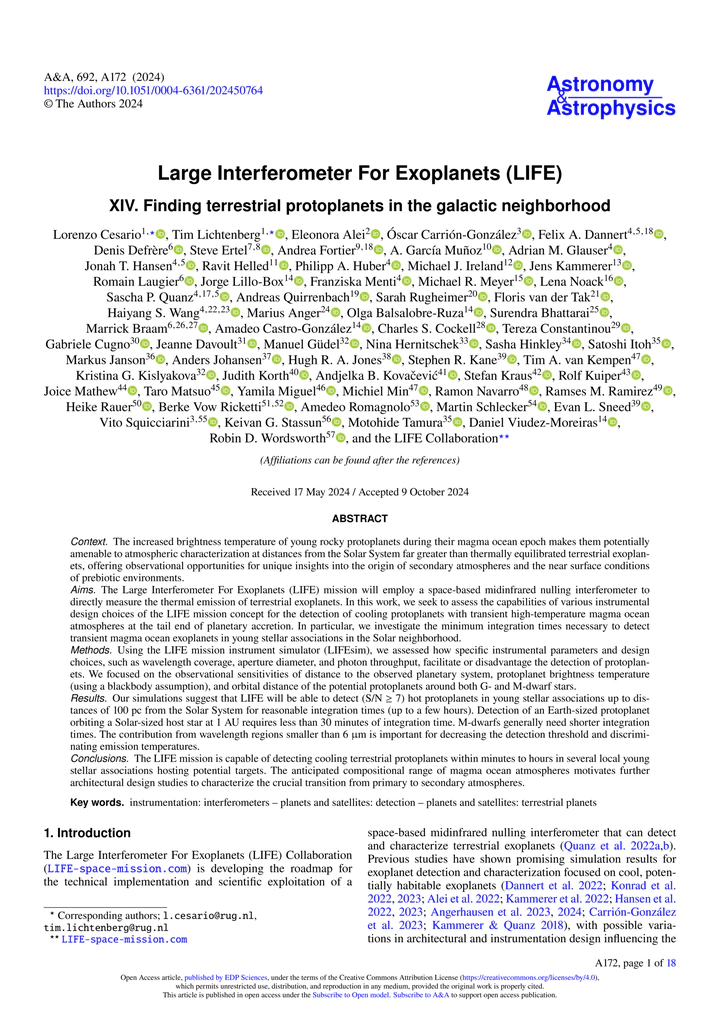Large Interferometer for Exoplanets (LIFE) – XIV. Finding Terrestrial Protoplanets in the Galactic Neighborhood

Abstract
The increased brightness temperature of young rocky protoplanets during their magma ocean epoch makes them potentially amenable to atmospheric characterization at distances from the Solar System far greater than thermally equilibrated terrestrial exoplanets, offering observational opportunities for unique insights into the origin of secondary atmospheres and the near surface conditions of prebiotic environments. The Large Interferometer For Exoplanets (LIFE) mission will employ a space-based midinfrared nulling interferometer to directly measure the thermal emission of terrestrial exoplanets. In this work, we seek to assess the capabilities of various instrumental design choices of the LIFE mission concept for the detection of cooling protoplanets with transient high-temperature magma ocean atmospheres at the tail end of planetary accretion. In particular, we investigate the minimum integration times necessary to detect transient magma ocean exoplanets in young stellar associations in the Solar neighborhood. Using the LIFE mission instrument simulator (LIFEsim), we assessed how specific instrumental parameters and design choices, such as wavelength coverage, aperture diameter, and photon throughput, facilitate or disadvantage the detection of protoplanets. We focused on the observational sensitivities of distance to the observed planetary system, protoplanet brightness temperature (using a blackbody assumption), and orbital distance of the potential protoplanets around both G- and M-dwarf stars. Our simulations suggest that LIFE will be able to detect (S/N ≥ 7) hot protoplanets in young stellar associations up to distances of 100 pc from the Solar System for reasonable integration times (up to a few hours). Detection of an Earth-sized protoplanet orbiting a Solar-sized host star at 1 AU requires less than 30 minutes of integration time. M-dwarfs generally need shorter integration times. The contribution from wavelength regions smaller than 6 μm is important for decreasing the detection threshold and discriminating emission temperatures. The LIFE mission is capable of detecting cooling terrestrial protoplanets within minutes to hours in several local young stellar associations hosting potential targets. The anticipated compositional range of magma ocean atmospheres motivates further architectural design studies to characterize the crucial transition from primary to secondary atmospheres.